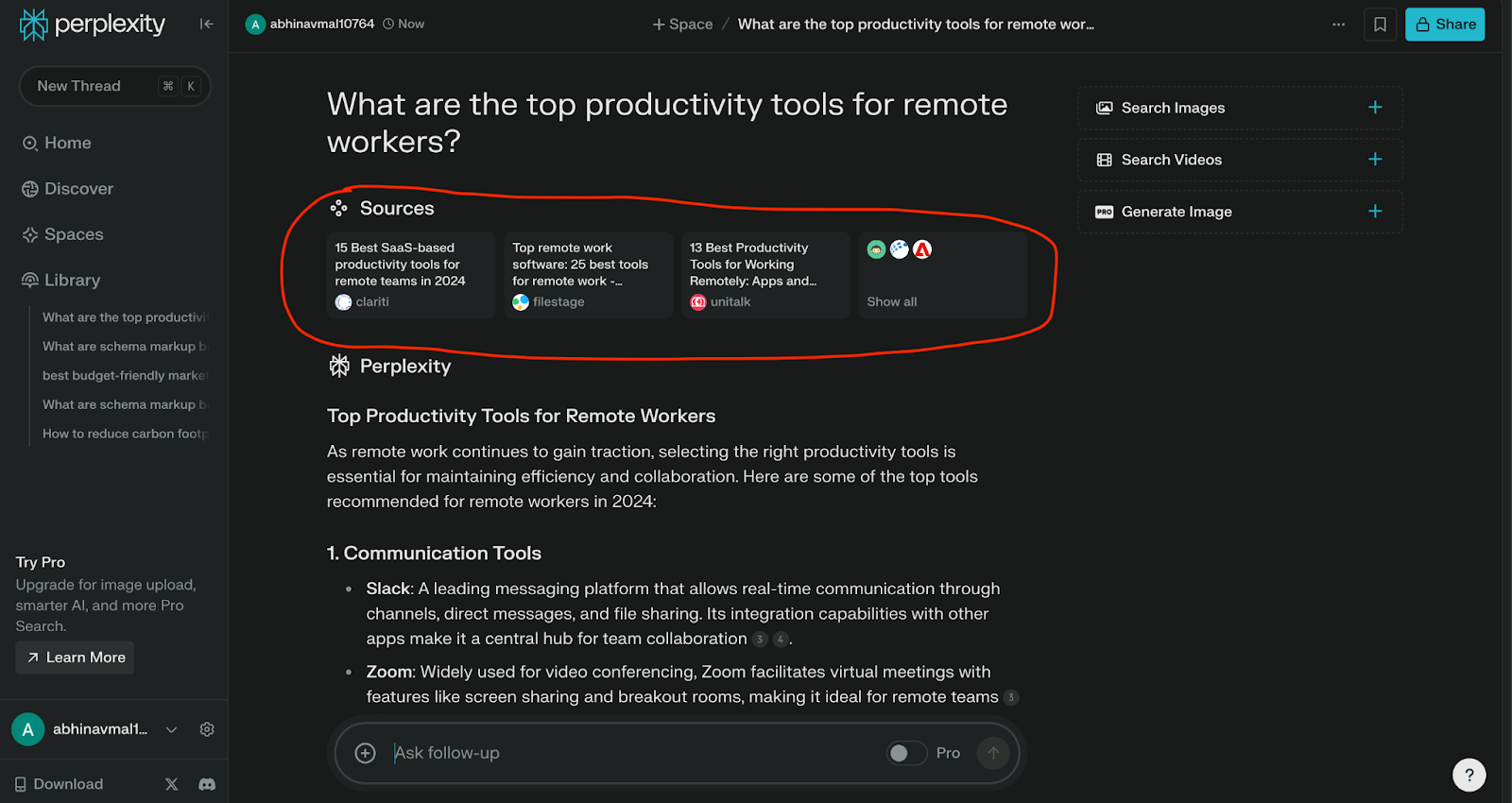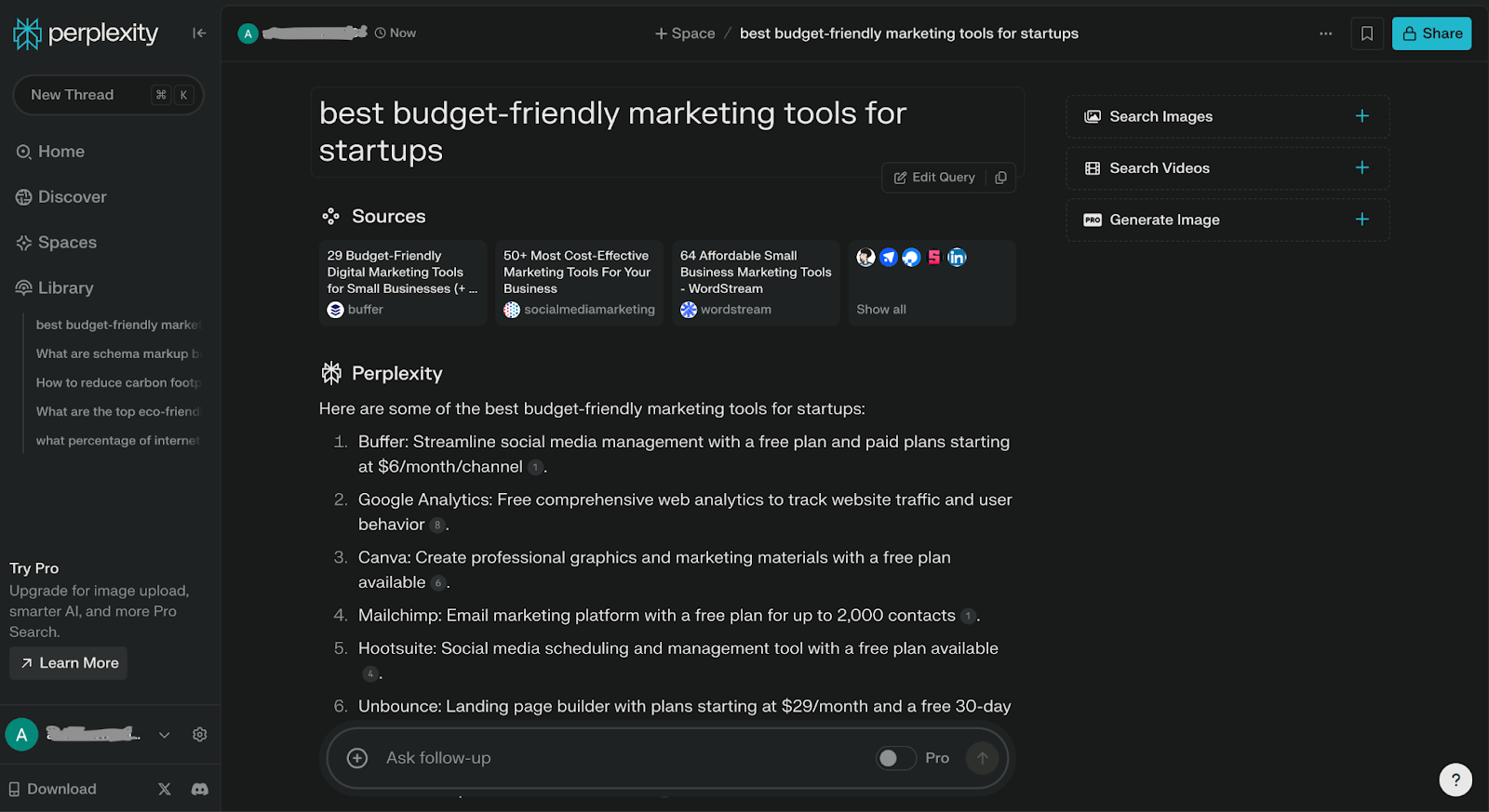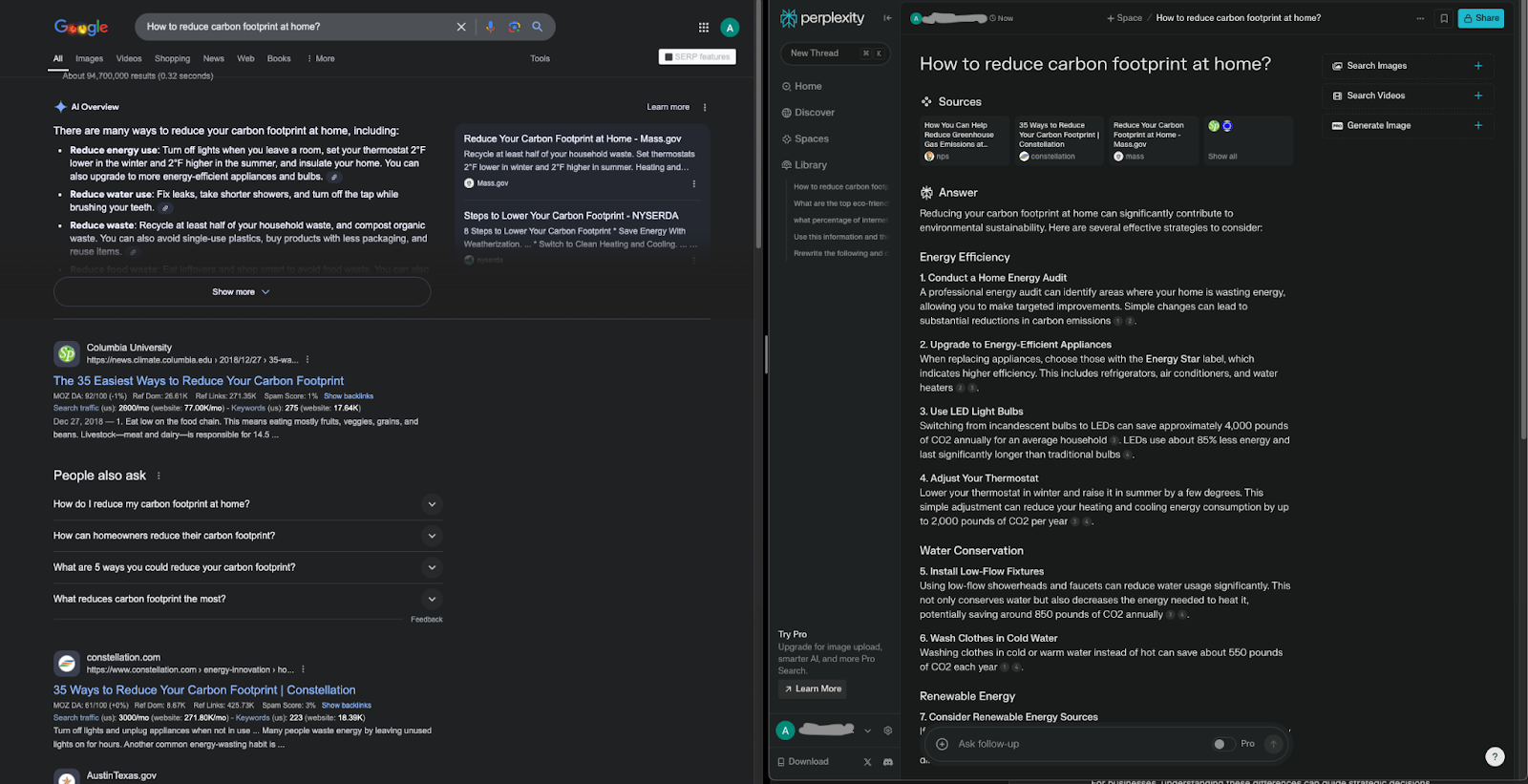Search behaviour is shifting rapidly, with users increasingly expecting conversational and precise answers tailored to their queries. This evolution is paving the way for new tools like Perplexity AI. Such rapid shift is driving a new era of search engine technology, and Perplexity AI is one of the emerging players in this space.
Designed to deliver concise, cited responses, Perplexity AI presents businesses with both opportunities and challenges as they navigate the evolving digital landscape. In this article, we explore how businesses can utilize Perplexity AI while understanding its limitations compared to traditional search engines like Google.
But First, What is Perplexity AI and Why Should You Care?
Perplexity AI is a next-generation answer engine that redefines how users access information. Unlike traditional search engines like Google, which display a list of links, Perplexity provides direct, conversational answers supported by citations from reliable sources. For businesses looking to rank, this shift is an opportunity to adapt strategies and outshine competitors by providing precise, user-focused content.

By prioritizing clarity and relevance, Perplexity AI allows businesses to become trusted sources of information. Embracing this technology can help build credibility, attract more customers, and improve online visibility.
Decoding Perplexity: What It Means in AI
In the realm of AI, “perplexity” measures a language model’s ability to predict words in a sequence accurately. A lower perplexity score indicates better prediction capabilities, leading to more coherent and relevant responses.
For businesses, this means crafting content that is straightforward yet engaging. By aligning your messaging with how Perplexity AI processes queries, you can ensure your brand’s content meets user intent and delivers real value.
Tailoring Content to Match Search Intent
Understanding your customers’ search intent is key to effective SEO, and Perplexity AI excels at identifying and addressing these needs. By analyzing queries holistically, Perplexity delivers answers that resonate with user expectations.

For instance, when a user searches for “best budget-friendly marketing tools for startups,” Perplexity doesn’t just match keywords. It identifies entities (“marketing tools” and “startups”) and attributes (“budget-friendly”), delivering precise recommendations. SMBs can replicate this strategy by creating content that addresses specific pain points and offers actionable solutions.
HowTo: Leveraging Perplexity AI Alongside Search Engines
Here’s a step-by-step guide to using Perplexity AI in tandem with traditional search engines to optimize your digital marketing strategy:
Step 1: Understand Your Target Audience
- Research your audience’s common queries and challenges.
- Use tools like surveys, feedback forms, and social media analytics to identify trending topics.
Step 2: Identify the Right Platform for Each Query
- Use Perplexity for specific, transactional queries (e.g., “What is the price of Product X?”).
- Leverage Google for broader, research-intensive searches (e.g., “How to choose sustainable materials for home renovation?”).
Step 3: Craft Intent-Focused and Dual-Optimized Content
- Write blog posts and articles that address specific customer pain points. Ensure content is clear and concise, and answers user questions effectively.
- Your content should address concise queries directly for Perplexity and expand on these topics with multimedia and supporting data to rank well on search engines.
Step 4: Optimize for Entities
- Incorporate schema markup to define your business’s key entities (e.g., services, locations, products).
- Use tools like Google’s Knowledge Graph or TextRazor to understand how entities are connected.
Step 5: Engage with Communities
- Actively participate in forums and platforms like Reddit or Quora relevant to your industry.
- Share your expertise by answering questions and providing valuable insights.
Step 6: Monitor Performance Across Platforms
- Use analytics to track how your content performs on Perplexity vs. Google.
- Adjust strategies based on which platform drives the most relevant traffic.
The Role of Entities in Business SEO Success
Entities—distinct concepts like products, locations, or services—are crucial to how both Perplexity AI and search engines like Google rank and prioritize information. While Perplexity focuses on recognized entities for precision, Google’s broader ecosystem allows for dynamic associations and cross-linking opportunities.
Key Steps to Optimize for Entities:
- Implement Schema Markup: Add structured data to define your business’s key entities and attributes.
- Build Credibility: Highlight your expertise through partnerships, case studies, and testimonials.
- Leverage E-E-A-T Principles: Establish trust by showcasing experience, authority, and expertise in your niche.
Enhancing User Experience with Predictive AI
Perplexity’s predictive capabilities can help businesses anticipate user needs, but its simplicity can sometimes fall short for users seeking diverse perspectives. Google’s predictive features, powered by vast datasets and integrations, offer a more holistic user journey.
To maximize impact:
- Combine Platforms: Use Perplexity to address immediate needs and search engines to foster deeper exploration.
- Refine Navigation: Ensure your website supports both quick answers and detailed content journeys.
- Personalize Recommendations: Tailor suggestions based on user behaviour across platforms.
Perplexity AI vs. Google:

While Google remains the dominant player in search, Perplexity AI offers unique advantages for businesses. Here’s a quick comparison:
| Feature | Perplexity AI | |
| Search Methodology | Comprehensive algorithms | Precise, conversational focus |
| Personalization | Advanced, behaviour-based | Minimal, focused |
| Interface | Rich, multifaceted | Streamlined, minimalist |
Understanding these differences can guide strategic decisions. Google excels in breadth and depth, while Perplexity’s streamlined design caters to transactional and quick-answer scenarios.
Preparing for the Future of Generative SEO
Generative Engine Optimization (GEO) is reshaping SEO, and businesses must adapt to thrive across platforms:
- Stay Updated on Trends: Follow developments in AI-driven search and adapt your strategies accordingly.
- Invest in Local SEO: Optimize for location-based searches to attract nearby customers. This strategy is especially valuable if you want to invest in SEO for a small business.
- Leverage Multimedia Content: Use videos, infographics, and audio to engage audiences across multiple formats.
Is Your Business Ready to Adapt?
Perplexity AI is a valuable tool in the evolving digital marketing landscape, but it’s not a replacement for Google’s comprehensive capabilities. By understanding the unique strengths of each platform and integrating them into your strategy, businesses can maximize their online visibility and engage audiences more effectively. The future of search is diverse and dynamic—are you ready to adapt?
Get in touch with us to start planning your content marketing strategy!
Common Questions People Ask About Perplexity AI and Digital Marketing:
What is Perplexity AI, and how does it change digital marketing?
Perplexity AI redefines search by delivering direct, conversational answers supported by credible citations, enabling businesses to meet user expectations more effectively.
How does Perplexity AI differ from traditional search engines like Google?
Unlike Google, which offers a list of links, Perplexity AI provides concise, cited responses, making it ideal for transactional and quick-answer queries.
How can Perplexity AI and Google be used together for better SEO?
Businesses can use Perplexity AI for precise answers and Google for broader, exploratory searches, ensuring a well-rounded digital strategy.
What are entities, and why are they critical for Perplexity AI optimization?
Entities are distinct concepts like products or services. Optimizing for entities helps businesses rank higher by aligning with AI’s focus on precision and relevance.
What steps should businesses take to optimize for Perplexity AI?
Businesses should craft concise, intent-focused content, use schema markup for structured data, and monitor performance across platforms to refine their strategies.
What is Generative Engine Optimization (GEO), and why does it matter?
GEO focuses on optimizing for AI-driven search tools like Perplexity AI, emphasizing the need for precise, user-focused content.
